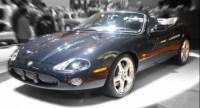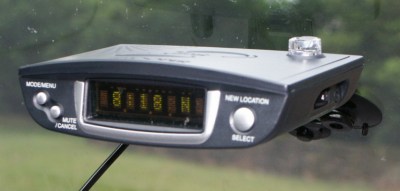
|
pictures-of-cars.com |
cuadros de coches
|
|
|
||
Main
Editorial
Motoring Tips
Car Insurance Tips
Site Map
Events
2006 events
2007 events
New Cars
2006 cars
2007 cars
2008 cars
Car Posters
Modified-Cars
Car News
About
Pictures of Cars
NEW!
Motoring Gifts
Driving Days
Donny 2007
MPH06
Pictures
Unusual
Movie Cars
Concept Cars
By Type
Classic Cars
Exotic Cars
Supercars
Convertible Cars
Sports Cars
SUVs
Hot Cars
Cool Cars
Muscle Cars
Fast Cars
By Make
AC
Alfa Romeo
Aston Martin
Bentley
BMW
Citroen
Ferrari
FIAT
Ford
Honda
Hummer
Jaguar
Lamborghini
Lexus
Maserati
Mazda
Mercedes
Mini
Noble
Nissan
Peugeot
Porsche
Renault
Rover
Seat
Suzuki
Subaru
Toyota
TVR
Vauxhall
Volkswagen
Specials
Porsche 911
Porsche Boxster
Reviews
Lexus IS200/IS300
Porsche Boxster
Toyota MR2
Bikes
Specifications New
Convertibles
Coupes
Estates
Hot Hatches
Small MPVs
Sports Convertibles
SuperCars
SuperMinis
SUVs
Race Cars
Nascar Cars
Race Cars
Rally Cars
Features
Download
Upload
Bits
Car Engines
Alloy Wheels
Misc
about
contact
Car Links
Cars Cars Cars
|
|
Information
Speed Cameras
Archive
Gallery-Pictures
2005 events
Max Power 2005
2004 events
2004 cars
Cars of 2003
Driving Games
Speed Camera DetectionHaving discussed some of the issues about whether or not one should use technology to detect speed cameras, here's some info on the options available to you. There's quite a range of kit out there from established names like Beltronics, Snooper, Valentine, Geodesy, Road Angel, Origin Blue. And some companies are offering a range separate individual units that can be used on their own, or else combined to produce a comprehensive speed camera warning system. Snooper Safety Alert Systems - S4 NeoA great example is the S4 Neo from Snooper Safety Alert Systems. Out of the box, the S4's primary function is a GPS alert system to which you download the position of fixed speed cameras via the internet. But the unit also has a laser detection system that should pick up the scatter of a handheld laser gun as it is used on vehicles up ahead of you. The S4 neo can also be fitted with an optional radar and laser detector that you need to install near the number plate of your vehicle. All in all, the neo is a very impressive package. Those elements of speed camera detection that can easily be popped into your vehicle are incorporated into the main unit which requires no installation work at all, but you can extend the system to Where combined systems such as the S4 neo will stand in the event of legislation to ban lazer detection isn't clear right now. If, as expected, such legislation leaves room for GPS speed camera position systems, but outlaws laser detectors, then you might be rightly concerned about using a combination device. Presumably an option would be to disable the laser detection of such systems so that they can continue to be used within the law.
We've got more information coming up on the S4 neo and its performance in our speed camera detection system tests. Other SystemsAlthough our current favourite is the Snooper S4 Neo, there's plenty of other systems for you to consider when looking for a speed camera alert system. Popular models include the Road Angel, the Orgin Blue devices (the Origin Blue i and the Ob2) and a range of systems from Geodesy. At the heart of most of these systems are GPS systems that are aware of the position of any nearby cameras, though a number of them also include detection systems to be fitted either inside the car or outside of it. The choice of unit will depend on how far you are prepared to go to install a unit in your vehicle, and whether you want to be able to move it from one car to another. On the whole, the GPS systems are small and light, with the Origin systems currently offering one of the smallest form factors. Road Angela and the latest systems from Geodesy are also quite easy to install. Apart from their form factor, the functionality of the devices needs to be considered. For a number of years we used an early Geodesy system which had a series of LEDs to indicate the presence of a camera; then number of LEDs would tell you how far away the cameras were - effective, but less informative than today's systems. The latest kit can tell you the speed limit at the camera that you're approaching which we find to be invaluable - in an ideal world you would know the limit you're in, and in any case a reminder should be placed near the camera, but in practice many drivers find themselves approaching a camera and are uncertain as to the current limit. So they slow down to their worst case estimation of the limit which in many cases is 10mph less than the actual limit. Other featuresElectronic Compass and ClockAs you can see from the picture above, when not actively warning of speed cameras, devices such as the S4 neo provide other useful information to the driver. The 8:18 in the display is the current time at GMT and N indicates that the vehicle is travelling North. Whilst as a compass the device is fairly crude, it's information can be quite useful at times. The system will display the nearest of the 8 points of the compass that it's aware of - N, NE, E, SE, S, SW, W and NW. And while the time is usually an hour out for UK users, it is more accurate than the average car clock, taking its signal from the GPS Satellites. |
|
|
||||||||||||||||||
|
||||||||||||||||||
|
|
|
info@pictures-of-cars.com |








